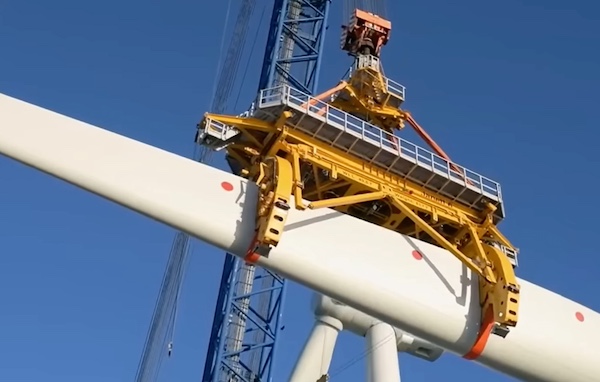
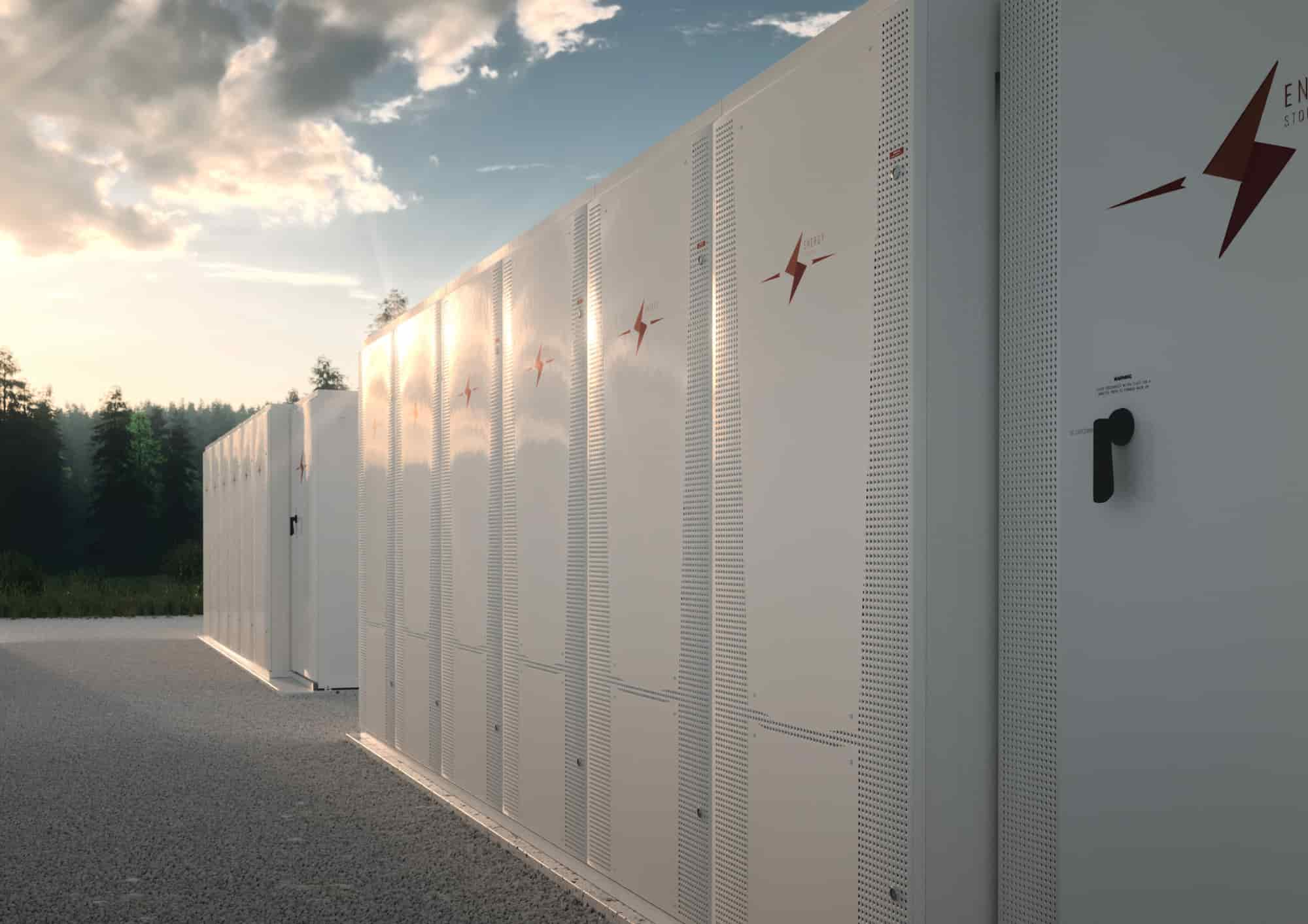


Auburn University’s McCrary Institute for Cyber and Critical Infrastructure Security was awarded a $10 million Department of Energy grant in partnership with Oak Ridge National Laboratory (ORNL) to create a pilot regional cybersecurity research and operations center to protect the electric power grid against cyberattacks.
The total value of the project is $12.5 million, with the additional $2.5 million coming from Auburn University and other strategic partners.
 |
The center, officially named the Southeast Region Cybersecurity Collaboration Center (SERC3), will bring together experts from the private sector, academia and government to share information and generate innovative real-world solutions to protect the nation’s power grid and other key sectors. It will include a mock utility command center to train participants in real-time cyber defense.
“Auburn University is proud to be at the forefront of this important field as we work against one of the greatest threats the country and the business sector will face in the future,” said Steve Taylor, Auburn University’s senior vice president for research and economic development. “The center will conduct critical research and provide real operational solutions to protect all of us as we address these challenges. We are thankful to Oak Ridge National Laboratory for partnering with us and Rep. Mike Rogers for his support in securing funding for this critical program.”
The center will run experiments with industry partners in a research lab environment to support integration of new and existing security software and hardware into operational environments. Research labs will be established at Auburn University, housed at the Samuel Ginn College of Engineering, and at the Oak Ridge National Laboratory in Oak Ridge, Tennessee.
“We are excited to work with Auburn on this important national mission,” said Oak Ridge National Laboratory Director Stephen Streiffer. “We’re combining our capabilities to partner with industry, develop new security technologies and transfer those technologies to industry, all while developing the workforce that will operate these enhanced systems.”
Workforce and skills development will be a core role of Auburn’s in this partnership.
“This project provides an exciting opportunity for our college and our students,” said Mario Eden, dean of the Samuel Ginn College of Engineering. “Our students will get hands-on experience in a real-world environment. We have a proven track record of innovation and this project perfectly aligns with our mission to provide the best student-centered engineering experience in America and expand our engineering knowledge through research.”
With an emphasis on critical infrastructure, the research will help utilities across the nation become more resilient to the increasing threat of cyberattacks.
“We know that adversaries want the ability to disrupt our energy infrastructure, which could be devastating for our communities,” said Moe Khaleel, associate laboratory director for National Security Sciences at ORNL. “SERC3 will focus on establishing regional partnerships and developing science-based solutions to mitigate these threats – and keep everyone’s lights on.”
Puesh M. Kumar, director of the Department of Energy’s Office of Cybersecurity, Energy Security and Emergency Response (CESER), praised the collaboration between organizations.
“I applaud Auburn University and Oak Ridge National Laboratory’s collaborative effort to advance grid cybersecurity,” Kumar said. “Everyone must come together – industry, the national laboratories, academia, as well as State and Federal governments – if we are to succeed against the growing cyber threats facing the U.S. energy sector from malicious actors and nation-states like the People’s Republic of China. This partnership is a critical example of that.”
Frank Cilluffo, director of the McCrary Institute, said the project is at the core of what the institute does.
“A secure and resilient grid is a national and regional imperative,” Cilluffo said. “Spearheaded by James Goosby at McCrary and Tricia Schulz at Oak Ridge, we will create new research to rapidly identify, share and mitigate cybersecurity risks while we train the future workforce we need to keep us safe.”
Auburn University’s McCrary Institute for Cyber and Critical Infrastructure Security | https://eng.auburn.edu/mccrary/
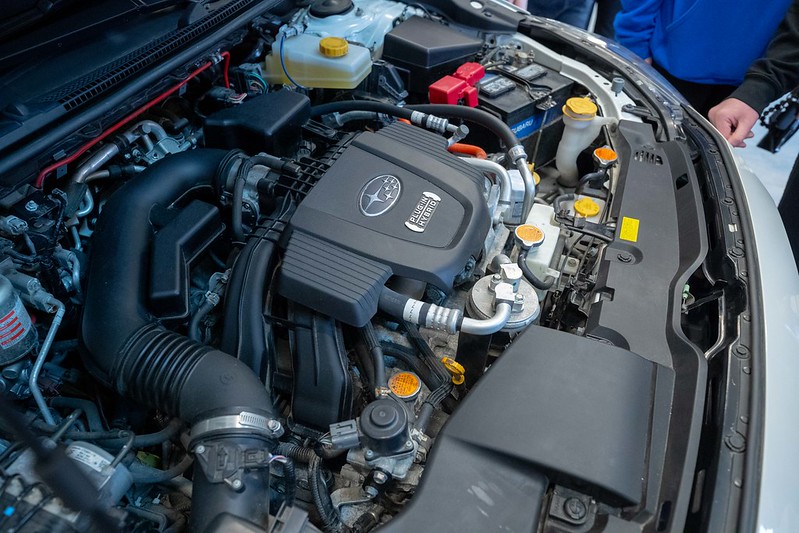
The New York Power Authority (NYPA) celebrated its third round of donations of hybrid and electric vehicles to automotive technology programs at educational institutions across New York State. The vehicle donation, coupled with specialized hand tools and level 2 chargers, aims to ensure the next generation of automotive technicians are trained in green vehicle technology as the demand for electric vehicles increases and New York moves closer to its ambitious climate goals. NYPA’s Environmental Justice Department today presented a 2019 Subaru Crosstrek plug-in hybrid to students and administrators at Albany High School.
“Electric vehicles will be increasingly popular throughout New York State over the next decade and that means new career opportunities for young people,” said Justin E. Driscoll, Power Authority president and CEO. “The Power Authority hopes that donating these hybrid and electric vehicles will serve as hands-on tools for teaching the technical skills that will be in high demand in a stronger and greener workforce.”

The New York Power Authority Board of Trustees agreed in December to transfer ownership of six Power Authority fleet vehicles and specialized training automotive tools and chargers to Board of Cooperative Educational Services (BOCES) and Career Technical Education (CTE) programs across the state.
In addition to the City School District of Albany, the following educational institutions received donations:
NYPA’s Environmental Justice team identified the six institutions as serving disadvantaged communities near NYPA assets and strategic projects.
“This is an amazing opportunity for Albany High School students and we’re incredibly grateful to the New York Power Authority,” said City School District of Albany Superintendent Joseph Hochreiter. “Adding an electric vehicle to the teaching toolbox will make a great program even better—and greener.”
Albany High students can take automotive classes either independently or in a “pathway.” Students following the automotive pathway spend three years in intensive classes, where they get hands-on experience both in the school’s auto repair classroom and in internships with local businesses. Those who successfully complete the pathway receive a technical endorsement on their diploma and are ready to work at an entry-level position at a repair shop.
“Technology is rapidly evolving in the automotive industry, and knowing the basics of how to work on and around these high-powered systems is paramount for safety and understanding,” said Albany High automotive teacher Patrick Whitton. “Having this vehicle will give our students hands-on experience—which is a much better way to learn complex subjects.”
Each school that receives a car will also get a set of insulated hand tools and a Level 2 charger intended to allow students pursuing careers in the industry to better understand vehicle charging infrastructure. The Power Authority is also developing a training program as an opportunity for automotive technology instructors.
NYPA agreed in 2019 to start donating retired NYPA hybrid and all-electric vehicles to regional educational institutions for use in a training environment as part of the institutions’ automotive maintenance and repair curriculum. Those first three donations served as a pilot for a potential wider distribution of NYPA’s electric vehicles for educational purposes. Twenty-two vehicles have so far been donated.
With the increasing popularity and availability of electric vehicles in the domestic market, the demand for technicians who can service these vehicles will be increasing as well. As these vehicles are newer and their mechanical components vary greatly from fossil fuel-powered vehicles, opportunities to become a technician in this area are sparse.
By donating the retired fleet hybrid and electric vehicles to educational institutions with the express purpose that they be used only as a training instrument for future EV technicians, NYPA is contributing to New York State’s green energy future in a very tangible way and improving career prospects for participating students. The addition of electric and hybrid vehicles to the institution’s curriculum will also allow those institutions to provide additional specialized certifications to students.
“The donation of retired fleet electric and hybrid vehicles is one of many ways the Power Authority supports the clean energy workforce,” said Kaela Mainsah, vice president of Environmental Justice. “Our goal is to ensure that communities that have been historically under-resourced are prepared to participate in future careers.”
NYPA’s Environmental Justice team offers science, technology, engineering and math (STEM) education, mentorship and energy efficiency initiatives to meet the needs of underserved and under-resourced communities located near NYPA's power facilities.
NYPA | www.nypa.gov
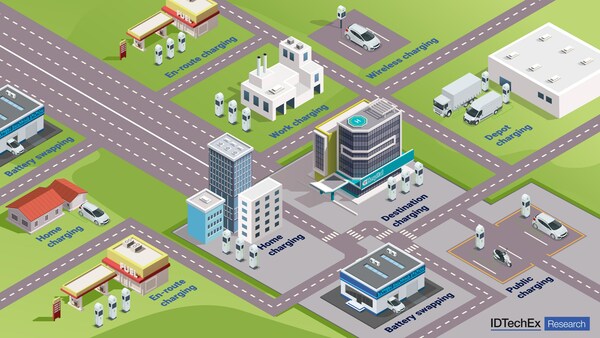
Based on their ongoing research into the EV charging market, IDTechEx estimates that 222 million chargers will be needed by 2034 to support the growing global EV fleet. IDTechEx also predicts that the cumulative global investment in global charging infrastructure will exceed $123 billion by 2034 (hardware cost alone). IDTechEx research aims to keep up with the changes and developments in EV charging by monitoring and analyzing the EV charging industry, its developments and regulations, and the latest technological trends and innovations.
There is undoubtedly a huge push to build global DC fast-charging networks. The US government is providing more than $5 billion in funding and incentives as part of the NEVI program to build a coast-to-coast fast charging network, and many countries in Europe are rolling out similar programs following the AFIR regulations to spur EV charging infrastructure growth. 2024 will be a big year for EV charging, but, as discussed in this article, there's more to the story. IDTechEx's report "Charging Infrastructure for Electric Vehicles and Fleets 2024-2034" covers the trends and developments in the EV charging industry.
EV charging solutions are diversifying
As electrification penetrates multiple vehicle markets, the type of charging infrastructure needed is also evolving. The IDTechEx charging infrastructure market report provides an in-depth coverage of multiple types of EV charging solutions including private AC charging, public DC charging, megawatt charging, battery swapping, and wireless charging. Vehicle platform voltages are shifting from 400 to 800 V architectures with the use of traction integrated on-board DC charging, unlocking even higher charging powers, while bringing new thermal challenges. This research from IDTechEx provides clarity on the different technologies available today and those emerging with potential for disruption in the future.
Technologies like destination or wallbox DC chargers, megawatt charging, robotic charging, battery-buffered charging, off-grid charging, and mobile charging are some examples of the emerging EV charging solutions included in the research from IDTechEx. The EV charging market report covers the key players within these fields, benchmarks their products, and provides a market outlook for their adoption.
MCS has the spotlight and large promises to fulfill
The major constraint to rapid commercial adoption of electric trucks in regional and long-haul operations is the availability of high-power opportunity charging along highways. The Megawatt Charging System (MCS) promises to deliver 1 MW power levels to quickly top-up batteries in mandated break times for truck drivers, although no commercial installations have been made ready to use yet. The Traton, Volvo, and Daimler established joint venture, Milence, has 4 sites in operation all using CCS chargers rated for 400 kW power output with future plans to install MCS. IDTechEx speculates that visibility around spare grid capacity and connection timelines (and faster processing) are current challenges in industry.
Ensuring high utilization will also be key to ensure the economic viability of MCS. As such, at an early stage of the electric truck market, charge point operators (CPOs) will find it hard to justify the business case for MCS. CCS can cover a significant share of heavy-duty vehicle (HDV) charging needs in locations where MCS does not make economic sense i.e. areas where there is low density of truck traffic. IDTechEx reports that the absence of MCS should not be a major barrier to electrification of trucks.
The Alternative Fuel Infrastructure Regulation (AFIR) was designed to provide base coverage along European Highways starting in 2025. According to IDTechEx, countries that see most HDV traffic will need to over comply with AFIR targets. Countries like Germany, France, and Poland will need more public charging to cater to a larger operational eTruck fleet. For countries like Sweden where the traffic density is lower, the average power needed per site will also be lower.
Are off-grid charging solutions the stepping stone before the grid catches up?
As BEV uptake increases, utility grids are becoming increasingly strained, leading to growing concerns about the capacity of distribution networks being able to support the necessary roll-out of EV charging infrastructure. Additionally, the expansion of electrification in new sectors such as construction presents unique challenges and opportunities in charging requirements. To address these issues, grid-independent charging systems are being developed and deployed, and IDTechEx's research contains extensive coverage and analysis of off-grid charging technology and players in the recent report "Off-Grid Charging For Electric Vehicles 2024-2034: Technologies, Benchmarking, Players and Forecasts"
A wide range of fully off-grid and hybrid solutions are emerging to the market, powered by a range of energy sources. Solar canopy chargers are currently the most mature market and offer 100% renewable electricity without any infrastructure required. Hydrogen fuel cell technology is increasingly prevalent in distributed generation and is seen by many advocates as a green alternative to polluting and carbon-intensive diesel generators. Hydrogen generators offer temporary and high-powered outputs, which IDTechEx believes offers strong value propositions to the growing numbers of electric construction vehicles.
As net-zero targets get stricter and the push for electrification grows, infrastructure is expected to be required much quicker than the grid can be built out. In this context, off-grid charging presents itself as a strong candidate for supplying this power without having to resort to carbon-intensive diesel generators. Many startups and incumbent OEMs are part of the landscape within off-grid charging. Noteable incumbent examples include Toyota, Hitachi, and GM with their hydrogen fuel-cell generators now being repurposed as stationery energy generation units.
IDTechEx has the most comprehensive EV charging research portfolio spanning major technologies like traditional conductive charging, wireless charging, battery swapping, and off-grid charging encompassing all vehicle segments already being electrified. For more information on these reports, or to view the full EV research portfolio, please visit www.IDTechEx.com/Research/EV.
IDTechEx | www.idtechex.com

SolarTech, a premier solar company based in California, proudly announces the appointment of Dan Reicher to its board of directors. Renowned as an entrepreneur, investor, policymaker, lawyer, and educator, Reicher brings unparalleled expertise and insight in clean energy and climate change.
Since its start in 2001, SolarTech has been at the forefront of providing comprehensive solar solutions to residential, commercial, and non-profit clients across California and Arizona.
The addition of Dan Reicher to SolarTech's board further solidifies the company's position as an industry leader in clean energy innovation. Reicher's distinguished career includes serving in the administrations of three U.S. presidents, extensive testimony before the U.S. Congress, and pivotal contributions to Google's pioneering climate and clean energy initiatives. As former U.S. Assistant Secretary of Energy, he oversaw a substantial annual clean energy R&D budget and later co-founded one of the nation's first renewable energy project investment firms.
Before joining SolarTech, Reicher served as the founding executive director of the Steyer-Taylor Center for Energy Policy and Finance at Stanford University. Currently, he's a Stanford senior research scholar, a clean energy entrepreneur, and an influential advisor in business and policy circles.
SolarTech is pleased to welcome Reicher's vast experience and strategic insights to further its mission of delivering clean energy solutions to businesses across California and Arizona, empowering them to reduce energy costs and embrace sustainable practices.
"SolarTech has made great strides in growth in the past years," said JT Garrison, CEO of SolarTech. "With this success the company must grow from a governance and strategy standpoint as well. We are thrilled to have Dan Reicher join our Board of Directors and are looking forward to tapping his tremendous knowledge as an entrepreneur while advancing the clean energy industry."
SolarTech | www.solartechonline.com

Ameresco, Inc., (NYSE: AMRC), a leading cleantech integrator specializing in energy efficiency and renewable energy, announced they have been awarded an Energy Savings Performance Contract (ESPC) from Columbia County, Oregon. The collaboration aims to make the historic John Gumm building more energy efficient, and it is also part of a larger multi-phase effort to enhance the functionality and capacity of county facilities.
Under the ESPC, Ameresco will implement modernization retrofits and expansions and energy efficiency solutions, including upgrading the building’s boilers, the building envelope, controls, HVAC and ventilation, interior lighting, and other infrastructure needs.
Columbia County recently acquired the John Gumm building, which first opened its doors in 1919, serving as a school until it closed in 1999. With the renovations to the John Gumm building, a 30,000 square foot facility, and the nearby courthouse, the county is looking to make sure it is prepared to serve its workforce and the surrounding community in the present, and the future.
“This multi-phase project demonstrates the county’s commitment to enhancing functionality and capacity through strategic upgrades,” said Margaret Magruder, Columbia County Commissioner. “John Gumm’s comprehensive transformation ensures that the county is equipped to meet future demands and uphold our promise of exceptional service to the community.”
The John Gumm building, upon completion, will house an auditorium for public meetings, the county’s Small Business Development Center (SBDC), Columbia-Pacific Economic Development District, a non-profit, and the Columbia County Museum on the first floor, as well as office space for various county departments on the second floor.
“We are proud to be part of the efforts to bring this historic building into the 21st century,” said Lou Maltezos, Executive Vice President, Ameresco. “The most sustainable building is the one that is already built, and through these efficiency upgrades and retrofits, the county workforce and its residents will be able to enjoy the John Gumm building for many years to come in a way that is sustainable for the climate and for their community.”
The Columbia County Board of Commissioners marked a significant achievement with an exclusive media event on April 17th, 2024, held at the historic John Gumm Building. Paul Vogel, Columbia Economic Team’s Commissioner briefed invited community members and journalists on the latest developments in the county’s Renovation and Improvement Project.
Ameresco | www.ameresco.com
.jpg)
Catalyze, a clean energy transition company that finances, builds, owns, and operates solar, battery storage, and electric vehicle charging systems for commercial and industrial customers, announced the operation of a solar and storage project installed at 66 Galen, a purpose built life science building owned in a joint venture by Davis and Boston Development Group (BDG). The project also included the installation of EV charging stations.
.jpg)
66 Galen Street, located in Watertown, Massachusetts, is a 224,106 square-foot Class A life science building featuring modern, purpose-built offices and laboratories. The LEED Gold certified facility draws power from its 252 kWdc solar and 125 kW storage system, and also boasts a series of EV charging stations featuring 15 ports.
“We’re thrilled to bring this project online, marking another milestone in our commitment to innovative development,” said Jared Haines, CEO of Catalyze. “The completion of the 66 Galen facility underscores Davis’ and Boston Development Group’s dedication to creating modern, sustainable spaces that elevate communities. By prioritizing clean energy amenities, ownership recognizes that sustainability is not only an environmental necessity but also a key factor in attracting businesses and residents to vibrant locations like Watertown.”
The project supports the building’s ability to meet requirements under Watertown’s Climate and Energy Plan, which calls for 50 percent solar roof coverage on new and substantially renovated buildings over 10,000 square feet. To support this project, Catalyze participated in the Solar Massachusetts Renewable Target (SMART) program, which offers incentives for residential and commercial solar projects throughout Massachusetts.
“66 Galen Street is a premier destination for life science companies, with state-of-the-art lab space and superior amenities, coupled with a strong focus on sustainability and climate-friendly utilities,” said Cappy Daume, Chief Portfolio Management Officer at Davis. “The addition of new clean energy solutions such as solar, battery storage and EV charging, are a few of the many important steps we took to differentiate the site from others in the market, furthering our commitment to our ESG goals, and ensuring maximum value for Davis’ investors in the long term. We are thrilled to partner with Catalyze to advance our sustainability commitment at 66 Galen and the greater Watertown community.”
“EnCap is proud of Catalyze’s delivery of the 66 Galen project and believes it is a testament to the Company’s innovative approach,” said Shawn Cumberland, Energy Transition Managing Partner at EnCap. “Through its deep market expertise and holistic view of customer needs, Catalyze has continued to build its track record of delivering a differentiated offering of decarbonization solutions.”
“It’s terrific to see a multi-technology scheme such as 66 Galen which comprises energy generation from solar PV and battery storage come into operation,” said Javier Orellana, Director, Energy Infrastructure at Actis. “It’s a perfect demonstration of the energy transition in progress, with Catalyze providing a mix of sustainable, co-located technologies to enhance the value and attractiveness of a state-of-the-art real estate development. Working with commercial real estate owners to serve C&I customers across the US is a key part of the Catalyze strategy as corporate demand for clean power and mobility solutions continues to grow.”
In addition to the new solar panels, battery storage and EV charging provided by Catalyze, 66 Galen Street is equipped with several features chosen intentionally to enhance the building’s sustainability and climate efficiency. These include the durable, heat resistant exterior material using natural, 100% recyclable terra cotta tiles with a low-e coating that maximizes the building’s insulative properties and minimizes solar heat gain; high-efficiency LED and self-dimming lighting to minimize light pollution; a variable-volume air handler system that creates a 19 percent reduction in energy cost compared to buildings of a similar size; and significant water conservation infrastructure which directs excess rainwater to green space.
Catalyze | www.catalyze.com
Davis | www.thedaviscompanies.com
Boston Development Group | www.bdg1.com
EnCap Investments | www.encapinvestments.com.
Actis | www.act.is

Cabot Corporation (NYSE: CBT) announced that the U.S. Department of Energy (DOE), under the Bipartisan Infrastructure Law, selected its application for a $5 million research grant. This grant will be used by Cabot and its partners to support the deployment of fuel cells, which emit only water when creating electricity.
The transition to electric in the worldwide mobility landscape is significantly supported by fuel cells, especially in the electrification of long-distance transportation. This importance stems from the fact that the extended driving range and management of heavier loads necessary for long-haul travel present difficulties for the adoption of battery technology.
The project will focus on developing an innovative and scalable manufacturing process for producing specialized carbon black that can be used as carbon catalyst supports for fuel cells. This technology will support and accelerate the establishment of a domestic catalyst supply chain, by providing a reliable source of high-performance carbon catalyst support.
Cabot is the lead recipient on the project titled, “Scalable, Innovative Manufacturing Process for Novel Carbon Supports for Metal Catalysts for Medium and Heavy-Duty Proton Exchange Membrane Fuel Cells.” Building on Cabot’s strengths in carbon black particle production and engineering, especially in developing and commercializing carbon catalyst supports for fuel cells, this project will be deployed through collaborative research with Johnson Matthey, a leading manufacturer of catalysts and associated assemblies as well as Bosch, a leading fuel cell stack manufacturer and the University of California, Irvine, a leading research university in fuel cell technology. This project is poised to revolutionize the production of carbon catalyst supports essential for medium and heavy-duty fuel cells, aiming for a more sustainable and cost-effective manufacturing process. By developing a scalable and innovative manufacturing process, the project seeks to achieve high catalyst performance while optimizing the production process to increase process versatility, reduce production cost and minimize environmental impact.
“This DOE grant is not only a testament to our innovative capabilities but also aligns with our purpose to create materials that enable a more sustainable future. Through projects like this, Cabot is taking a leadership role in the evolution towards a more sustainable and efficient energy landscape,” said Patricia Hubbard, senior vice president and chief technology officer, Cabot Corporation. “By developing this technology, we aim to strengthen and accelerate the establishment of a domestic fuel cell catalyst supply chain to help ensure a reliable source of high-performance carbon catalyst support. By collaborating with esteemed partners and leveraging our collective expertise, we are poised to make significant contributions to the hydrogen economy, driving forward the United States’ leadership in clean energy technologies.”
The grant funding of $750 million for projects focused on enhancing hydrogen technologies, announced under the Bipartisan Infrastructure Law by the DOE, is dedicated to improving manufacturing and recycling capabilities for clean hydrogen systems and components. This investment aligns with the national clean hydrogen strategy detailed in the U.S. National Clean Hydrogen Strategy and Roadmap, which aims to lower costs, boost manufacturing, strengthen supply chains and support domestic employment in the clean hydrogen sector.
To learn more about the recent hydrogen funding selections and grants, visit the DOE’s Hydrogen and Fuel Cell Technology Office.
Cabot Corporation | cabotcorp.com
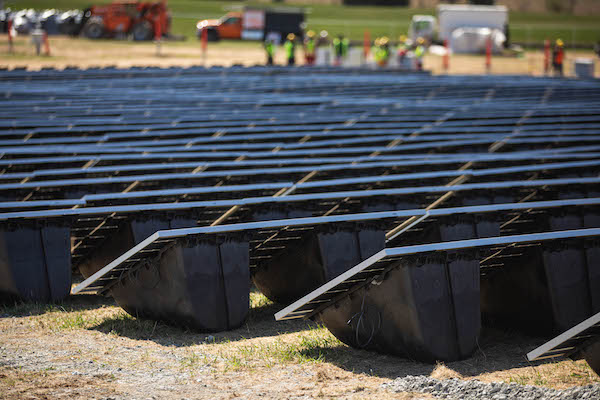
Alternative Energies May 15, 2023
The United States is slow to anger, but relentlessly seeks victory once it enters a struggle, throwing all its resources into the conflict. “When we go to war, we should have a purpose that our people understand and support,” as former Secretary ....

Unleashing trillions of dollars for a resilient energy future is within our grasp — if we can successfully navigate investment risk and project uncertainties.
The money is there — so where are the projects?
A cleaner and more secure energy future will depend on tapping trillions of dollars of capital. The need to mobilize money and markets to enable the energy transition was one of the key findings of one of the largest studies ever conducted among the global energy sector C-suite. This will mean finding ways to reduce the barriers and uncertainties that prevent money from flowing into the projects and technologies that will transform the energy system. It will also mean fostering greater collaboration and alignment among key players in the energy space.
 Interestingly, the study found that insufficient access to finance was not considered the primary cause of the current global energy crisis. In fact, capital was seen to be available — but not being unlocked. Why is that? The answer lies in the differing risk profiles of energy transition investments around the world. These risks manifest in multiple ways, including uncertainties relating to project planning, public education, stakeholder engagement, permitting, approvals, policy at national and local levels, funding and incentives, technology availability, and supply chains.
Interestingly, the study found that insufficient access to finance was not considered the primary cause of the current global energy crisis. In fact, capital was seen to be available — but not being unlocked. Why is that? The answer lies in the differing risk profiles of energy transition investments around the world. These risks manifest in multiple ways, including uncertainties relating to project planning, public education, stakeholder engagement, permitting, approvals, policy at national and local levels, funding and incentives, technology availability, and supply chains.
These risks need to be addressed to create more appealing investment opportunities for both public and private sector funders. This will require smart policy and regulatory frameworks that drive returns from long-term investment into energy infrastructure. It will also require investors to recognize that resilient energy infrastructure is more than an ESG play — it is a smart investment in the context of doing business in the 21st century.
Make de-risking investment profiles a number one priority
According to the study, 80 percent of respondents believe the lack of capital being deployed to accelerate the transition is the primary barrier to building the infrastructure required to improve energy security. At the same time, investors are looking for opportunities to invest in infrastructure that meets ESG and sustainability criteria. This suggests an imbalance between the supply and demand of capital for energy transition projects.
How can we close the gap?
One way is to link investors directly to energy companies. Not only would this enable true collaboration and non-traditional partnerships, but it would change the way project financing is conceived and structured — ultimately aiding in potentially satisfying the risk appetite of latent but hugely influential investors, such as pension funds. The current mismatch of investor appetite and investable projects reveals a need for improving risk profiles, as well as a mindset shift towards how we bring investment and developer stakeholders together for mutual benefit. The circular dilemma remains: one sector is looking for capital to undertake projects within their skill to deploy, while another sector wonders where the investable projects are.
This conflict is being played out around the world; promising project announcements are made, only to be followed by slow progress (or no action at all). This inertia results when risks are compounded and poorly understood. To encourage collaboration between project developers and investors with an ESG focus, more attractive investment opportunities can be created by pulling several levers: public and private investment strategies, green bonds and other sustainable finance instruments, and innovative financing models such as impact investing.

Expedite permitting to speed the adoption of new technologies
Another effective strategy to de-risk investment profiles is found in leveraging new technologies and approaches that reduce costs, increase efficiency, and enhance the reliability of energy supply. Research shows that 62 percent of respondents indicated a moderate or significant increase in investment in new and transitional technologies respectively, highlighting the growing interest in innovative solutions to drive the energy transition forward.
Hydrogen, carbon capture and storage, large-scale energy storage, and smart grids are some of the emerging technologies identified by survey respondents as having the greatest potential to transform the energy system and create new investment opportunities. However, these technologies face challenges such as long lag times between conception and implementation.
If the regulatory environment makes sense, then policy uncertainty is reduced, and the all-important permitting pathways are well understood and can be navigated. Currently, the lack of clear, timely, and fit-for-purpose permitting is a major roadblock to the energy transition. To truly unleash the potential of transitional technologies requires the acceleration of regulatory systems that better respond to the nuance and complexity of such technologies (rather than the current one-size-fits all approach). In addition, permitting processes must also be expedited to dramatically decrease the period between innovation, commercialization, and implementation. One of the key elements of faster permitting is effective consultation with stakeholders and engagement with communities where these projects will be housed for decades. This is a highly complex area that requires both technical and communication skills.
The power of collaboration, consistency, and systems thinking
The report also reveals the need for greater collaboration among companies in the energy space to build a more resilient system. The report shows that, in achieving net zero, there is a near-equal split between those increasing investment (47 percent of respondents), and those decreasing investment (39 percent of respondents). This illustrates the complexity and diversity of the system around the world. A more resilient system will require all its components – goals and actions – to be aligned towards a common outcome.
Another way to de-risk the energy transition is to establish consistent, transparent, and supportive policy frameworks that encourage investment and drive technological innovation. The energy transition depends on policy to guide its direction and speed by affecting how investors feel and how the markets behave. However, inconsistent or inadequate policy can also be a source of uncertainty and instability. For example, shifting political priorities, conflicting international standards, and the lack of market-based mechanisms can hinder the deployment of sustainable technologies, resulting in a reluctance to commit resources to long-term projects.
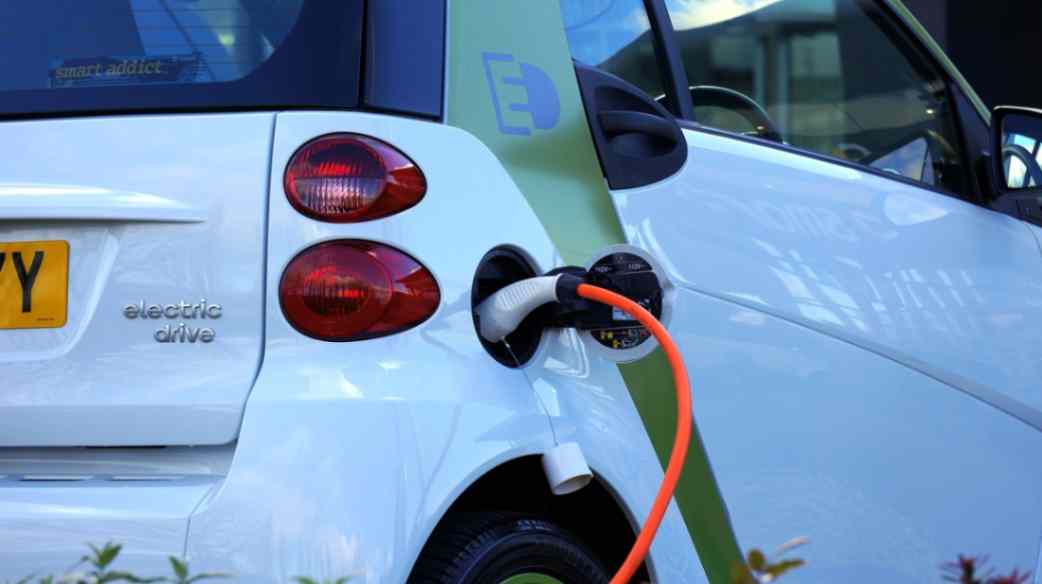
Variations in country-to-country deployment creates disparities in energy transition progress. For instance, the 2022 Inflation Reduction Act in the US has posed challenges for the rest of the world, by potentially channeling energy transition investment away from other markets and into the US. This highlights the need for a globally unified approach to energy policy that balances various national interests while addressing a global problem.
To facilitate the energy transition, it is imperative to establish stable, cohesive, and forward-looking policies that align with global goals and standards. By harmonizing international standards, and providing clear and consistent signals, governments and policymakers can generate investor confidence, helping to foster a robust energy ecosystem that propels the sector forward.
Furthermore, substantive and far-reaching discussions at international events like the United Nations Conference of the Parties (COP), are essential to facilitate this global alignment. These events provide an opportunity to de-risk the energy transition through consistent policy that enables countries to work together, ensuring that the global community can tackle the challenges and opportunities of the energy transition as a united front.
Keeping net-zero ambitions on track
Despite the challenges faced by the energy sector, the latest research reveals a key positive: 91 percent of energy leaders surveyed are working towards achieving net zero. This demonstrates a strong commitment to the transition and clear recognition of its importance. It also emphasizes the need to accelerate our efforts, streamline processes, and reduce barriers to realizing net-zero ambitions — and further underscores the need to de-risk energy transition investment by removing uncertainties.
The solution is collaborating and harmonizing our goals with the main players in the energy sector across the private and public sectors, while establishing consistent, transparent, and supportive policy frameworks that encourage investment and drive technological innovation.
These tasks, while daunting, are achievable. They require vision, leadership, and action from all stakeholders involved. By adopting a new mindset about how we participate in the energy system and what our obligations are, we can stimulate the rapid progress needed on the road to net zero.
Dr. Tej Gidda (Ph.D., M.Sc., BSc Eng) is an educator and engineer with over 20 years of experience in the energy and environmental fields. As GHD Global Leader – Future Energy, Tej is passionate about moving society along the path towards a future of secure, reliable, and affordable low-carbon energy. His focus is on helping public and private sector clients set and deliver on decarbonization goals in order to achieve long-lasting positive change for customers, communities, and the climate. Tej enjoys fostering the next generation of clean energy champions as an Adjunct Professor at the University of Waterloo Department of Civil and Environmental Engineering.
GHD | www.ghd.com
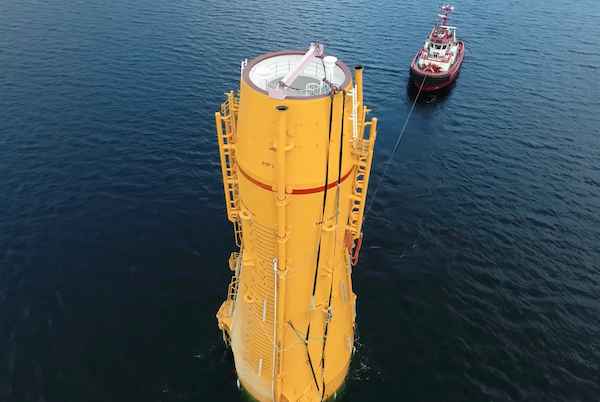
The Kincardine floating wind farm, located off the east coast of Scotland, was a landmark development: the first commercial-scale project of its kind in the UK sector. Therefore, it has been closely watched by the industry throughout its installation. With two of the turbines now having gone through heavy maintenance, it has also provided valuable lessons into the O&M processes of floating wind projects.
In late May, the second floating wind turbine from the five-turbine development arrived in the port of Massvlakte, Rotterdam, for maintenance. An Anchor Handling Tug Supply (AHTS)
vessel was used to deliver the KIN-02 turbine two weeks after a Platform Supply Vessel (PSV) and AHTS had worked to disconnect the turbine from the wind farm site. The towing vessel became the third vessel used in the operation.
This is not the first turbine disconnected from the site and towed for maintenance. In the summer of 2022, KIN-03 became the world’s first-ever floating wind turbine that required heavy maintenance (i.e. being disconnected and towed for repair). It was also towed from Scotland to Massvlakte.
Each of these operations has provided valuable lessons for the ever-watchful industry in how to navigate the complexities of heavy maintenance in floating wind as the market segment grows.

The heavy maintenance process
When one of Kincardine’s five floating 9.5 MW turbines (KIN-03) suffered a technical failure in May 2022, a major technical component needed to be replaced. The heavy maintenance strategy selected by the developer and the offshore contractors consisted in disconnecting and towing the turbine and its floater to Rotterdam for maintenance, followed by a return tow and re-connection. All of the infrastructure, such as crane and tower access, remained at the quay following the construction phase. (Note, the following analysis only covers KIN-03, as details of the second turbine operation are not yet available).
Comparing the net vessel days for both the maintenance and the installation campaigns at this project highlights how using a dedicated marine spread can positively impact operations.
For this first-ever operation, a total of 17.2 net vessel days were required during turbine reconnection—only a slight increase on the 14.6 net vessel days that were required for the first hook-up operation performed during the initial installation in 2021. However, it exceeds the average of eight net vessel days during installation. The marine spread used in the heavy maintenance operation differed from that used during installation. Due to this, it did not benefit from the learning curve and experience gained throughout the initial installation, which ultimately led to the lower average vessel days.
The array cable re-connection operation encountered a similar effect. The process was performed by one AHTS that spent 10 net vessel days on the operation. This compares to the installation campaign, where the array cable second-end pull-in lasted a maximum of 23.7 hours using a cable layer.
Overall, the turbine shutdown duration can be broken up as 14 days at the quay for maintenance, 52 days from turbine disconnection to turbine reconnection, and 94 days from disconnection to the end of post-reconnection activities.

What developers should keep in mind for heavy maintenance operations
This analysis has uncovered two main lessons developers should consider when planning a floating wind project: the need to identify an appropriate O&M port, and to guarantee that a secure fleet is available.
Floating wind O&M operations require a port with both sufficient room and a deep-water quay. The port must also be equipped with a heavy crane with sufficient tip height to accommodate large floaters and reach turbine elevation. Distance to the wind farm should also be taken into account, as shorter distances will reduce towing time and, therefore, minimize transit and non-productive turbine time.
During the heavy maintenance period for KIN-03 and KIN-02, the selected quay (which had also been utilized in the initial installation phase of the wind farm project), was already busy as a marshalling area for other North Sea projects. This complicated the schedule significantly, as the availability of the quay and its facilities had to be navigated alongside these other projects. This highlights the importance of abundant quay availability both for installation (long-term planning) and maintenance that may be needed on short notice.
At the time of the first turbine’s maintenance program (June 2022), the North Sea AHTS market was in an exceptional situation: the largest bollard pull AHTS units contracted at over $200,000 a day, the highest rate in over a decade.
During this time, the spot market was close to selling out due to medium-term commitments, alongside the demand for high bollard pull vessels for the installation phase at a Norwegian floating wind farm project. The Norwegian project required the use of four AHTS above a 200t bollard pull. With spot rates ranging from $63,000 to $210,000 for the vessels contracted for Kincardine’s maintenance, the total cost of the marine spread used in the first repair campaign was more than $4 million.
Developers should therefore consider the need to structure maintenance contracts with AHTS companies, either through frame agreements or long-term charters, to decrease their exposure to spot market day rates as the market tightens in the future.

While these lessons are relevant for floating wind developers now, new players are looking towards alternative heavy O&M maintenance options for the future. Two crane concepts are especially relevant in this instance. The first method is for a crane to be included in the turbine nacelle to be able to directly lift the component which requires repair from the floater, as is currently seen on onshore turbines. This method is already employed in onshore turbines and could be applicable for offshore. The second method is self-elevating cranes with several such solutions already in development.
The heavy maintenance operations conducted on floating turbines at the Kincardine wind farm have provided invaluable insights for industry players, especially developers. The complex process of disconnecting and towing turbines for repairs highlights the need for meticulous planning and exploration of alternative maintenance strategies, some of which are already in the pipeline. As the industry evolves, careful consideration of ports, and securing fleet contracts, will be crucial in driving efficient and cost-effective O&M practices for the floating wind market.
Sarah McLean is Market Research Analyst at Spinergie, a maritime technology company specializing in emission, vessel performance, and operation optimization.
Spinergie | www.spinergie.com

According to the Energy Information Administration (EIA), developers plan to add 54.5 gigawatts (GW) of new utility-scale electric generating capacity to the U.S. power grid in 2023. More than half of this capacity will be solar. Wind power and battery storage are expected to account for roughly 11 percent and 17 percent, respectively.
A large percentage of new installations are being developed in areas that are prone to extreme weather events and natural disasters (e.g., Texas and California), including high wind, tornadoes, hail, flooding, earthquakes, wildfires, etc. With the frequency and severity of many of these events increasing, project developers, asset owners, and tax equity partners are under growing pressure to better understand and mitigate risk.
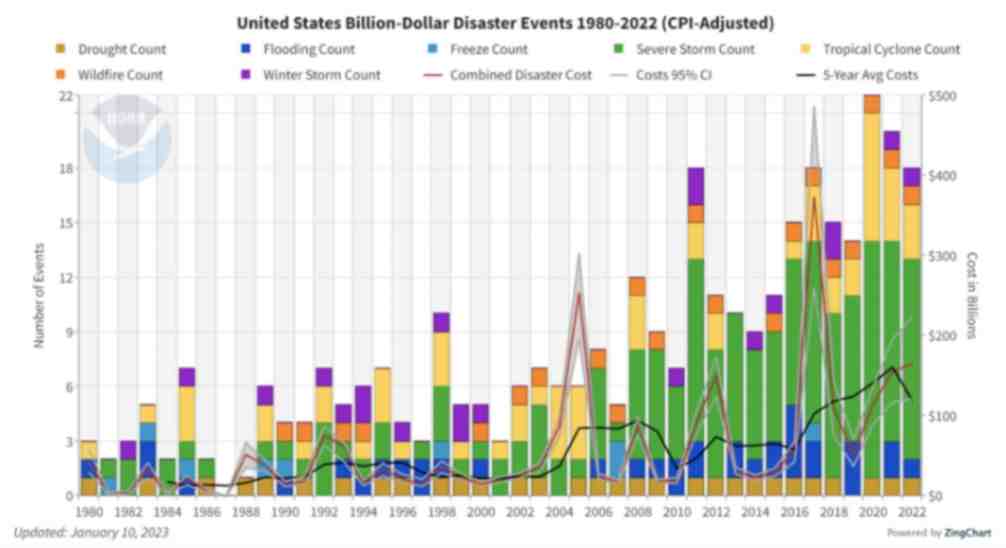
Figure 1. The history of billion-dollar disasters in the United States each year from 1980 to 2022 (source: NOAA)
In terms of loss prevention, a Catastrophe (CAT) Modeling Study is the first step to understanding the exposure and potential financial loss from natural hazards or extreme weather events. CAT studies form the foundation for wider risk management strategies, and have significant implications for insurance costs and coverage.
Despite their importance, developers often view these studies as little more than a formality required for project financing. As a result, they are often conducted late in the development cycle, typically after a site has been selected. However, a strong case can be made for engaging early with an independent third party to perform a more rigorous site-specific technical assessment. Doing so can provide several advantages over traditional assessments conducted by insurance brokerage affiliates, who may not possess the specialty expertise or technical understanding needed to properly apply models or interpret the results they generate. One notable advantage of early-stage catastrophe studies is to help ensure that the range of insurance costs, which can vary from year to year with market forces, are adequately incorporated into the project financial projections.
The evolving threat of natural disasters
Over the past decade, the financial impact of natural hazard events globally has been almost three trillion dollars. In the U.S. alone, the 10-year average annual cost of natural disaster events exceeding $1 billion increased more than fourfold between the 1980s ($18.4 billion) and the 2010s ($84.5 billion).

Investors, insurers, and financiers of renewable projects have taken notice of this trend, and are subsequently adapting their behavior and standards accordingly. In the solar market, for example, insurance premiums increased roughly four-fold from 2019 to 2021. The impetus for this increase can largely be traced back to a severe storm in Texas in 2019, which resulted in an $80 million loss on 13,000 solar panels that were damaged by hail.
The event awakened the industry to the hazards severe storms present, particularly when it comes to large-scale solar arrays. Since then, the impact of convective weather on existing and planned installations has been more thoroughly evaluated during the underwriting process. However, far less attention has been given to the potential for other natural disasters; events like floods and earthquakes have not yet resulted in large losses and/or claims on renewable projects (including wind farms). The extraordinary and widespread effect of the recent Canadian wildfires may alter this behavior moving forward.
A thorough assessment, starting with a CAT study, is key to quantifying the probability of their occurrence — and estimating potential losses — so that appropriate measures can be taken to mitigate risk.
All models are not created equal
Industrywide, certain misconceptions persist around the use of CAT models to estimate losses from an extreme weather event or natural disaster.
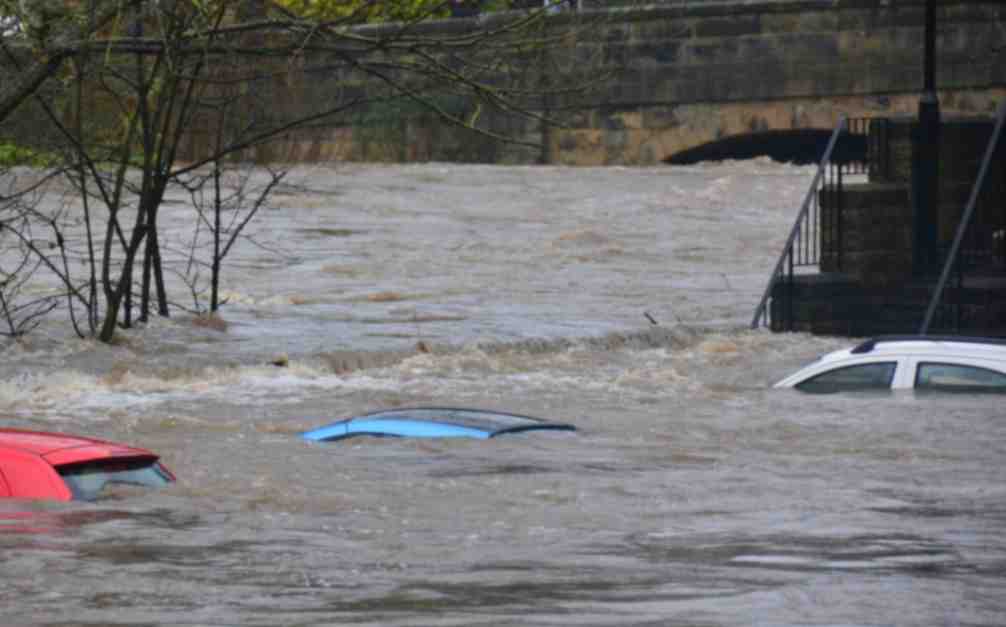
Often, the perception is that risk assessors only need a handful of model inputs to arrive at an accurate figure, with the geographic location being the most important variable. While it’s true that many practitioners running models will pre-specify certain project characteristics regardless of the asset’s design (for example, the use of steel moment frames without trackers for all solar arrays in a given region or state), failure to account for even minor details can lead to loss estimates that are off by multiple orders of magnitude.
The evaluation process has recently become even more complex with the addition of battery energy storage. Relative to standalone solar and wind farms, very little real-world experience and data on the impact of extreme weather events has been accrued on these large-scale storage installations. Such projects require an even greater level of granularity to help ensure that all risks are identified and addressed.
Even when the most advanced modeling software tools are used (which allow for thousands of lines of inputs), there is still a great deal that is subject to interpretation. If the practitioner does not possess the expertise or technical ability needed to understand the model, the margin for error can increase substantially. Ultimately, this can lead to overpaying for insurance. Worse, you may end up with a policy with insufficient coverage. In both cases, the profitability of the asset is impacted.
Supplementing CAT studies
In certain instances, it may be necessary to supplement CAT models with an even more detailed analysis of the individual property, equipment, policies, and procedures. In this way, an unbundled risk assessment can be developed that is tailored to the project. Supplemental information (site-specific wind speed studies and hydrological studies, structural assessment, flood maps, etc.) can be considered to adjust vulnerability models.
This provides an added layer of assurance that goes beyond the pre-defined asset descriptions in the software used by traditional studies or assessments. By leveraging expert elicitations, onsite investigations, and rigorous engineering-based methods, it is possible to discretely evaluate asset-specific components as part of the typical financial loss estimate study: this includes Normal Expected Loss (NEL), also known as Scenario Expected Loss (SEL); Probable Maximum Loss (PML), also known as Scenario Upper Loss (SUL); and Probabilistic Loss (PL).
Understanding the specific vulnerabilities and consequences can afford project stakeholders unique insights into quantifying and prioritizing risks, as well as identifying proper mitigation recommendations.
Every project is unique
The increasing frequency and severity of natural disasters and extreme weather events globally is placing an added burden on the renewable industry, especially when it comes to project risk assessment and mitigation. Insurers have signaled that insurance may no longer be the main basis for transferring risk; traditional risk management, as well as site and technology selection, must be considered by developers, purchasers, and financiers.
As one of the first steps in understanding exposure and the potential capital loss from a given event, CAT studies are becoming an increasingly important piece of the risk management puzzle. Developers should treat them as such by engaging early in the project lifecycle with an independent third-party practitioner with the specialty knowledge, tools, and expertise to properly interpret models and quantify risk.
Hazards and potential losses can vary significantly depending on the project design and the specific location. Every asset should be evaluated rigorously and thoroughly to minimize the margin for error, and maximize profitability over its life.
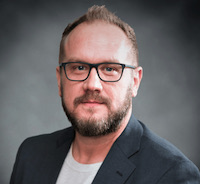 Chris LeBoeuf is Global Head of the Extreme Loads and Structural Risk division of ABS Group, based in San Antonio, Texas. He leads a team of more than 60 engineers and scientists in the US, UK, and Singapore, specializing in management of risks to structures and equipment related to extreme loading events, including wind, flood, seismic and blast. Chris has more than 20 years of professional experience as an engineering consultant, and is a recognized expert in the study of blast effects and blast analysis, as well as design of buildings. He holds a Bachelor of Science in Civil Engineering from The University of Texas at San Antonio, and is a registered Professional Engineer in 12 states.
Chris LeBoeuf is Global Head of the Extreme Loads and Structural Risk division of ABS Group, based in San Antonio, Texas. He leads a team of more than 60 engineers and scientists in the US, UK, and Singapore, specializing in management of risks to structures and equipment related to extreme loading events, including wind, flood, seismic and blast. Chris has more than 20 years of professional experience as an engineering consultant, and is a recognized expert in the study of blast effects and blast analysis, as well as design of buildings. He holds a Bachelor of Science in Civil Engineering from The University of Texas at San Antonio, and is a registered Professional Engineer in 12 states.
ABS Group | www.abs-group.com
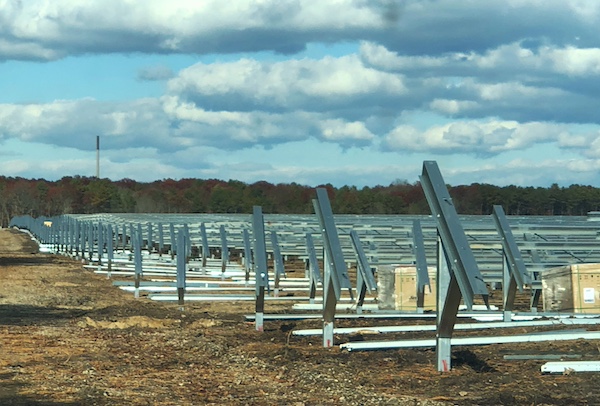
Throughout my life and career as a real estate developer in New York City, I’ve had many successes. In what is clearly one of my most unusual development projects in a long career filled with them, I initiated the building of a solar farm to help t....
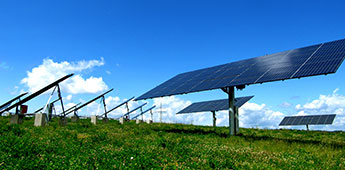
I’m just going to say it, BIPV is dumb. Hear me out…. Solar is the most affordable form of energy that has ever existed on the planet, but only because the industry has been working towards it for the past 15 years. Governments,....
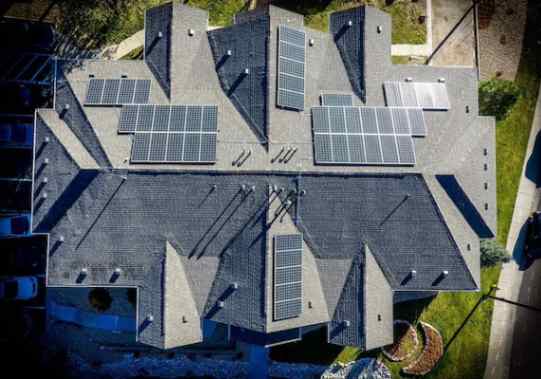
Heat waves encircled much of the earth last year, pushing temperatures to their highest in recorded history. The water around Florida was “hot-tub hot” — topping 101° and bleaching and killing coral in waters around the peninsula. Phoenix had ....
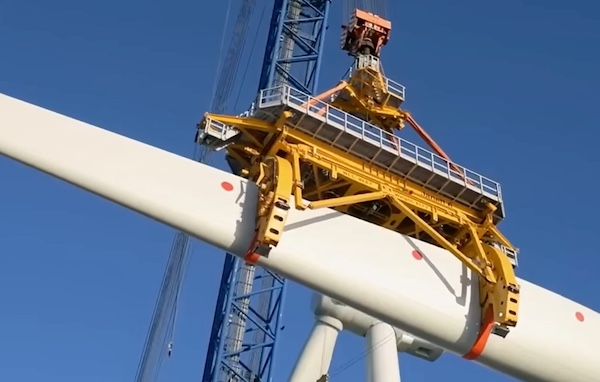
Wind turbines play a pivotal role in the global transition to sustainable energy sources. However, the harsh environmental conditions in which wind turbines operate, such as extreme temperatures, high humidity, and exposure to various contaminants, p....
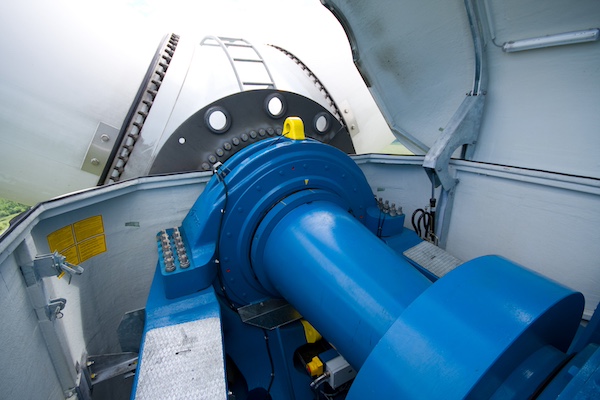
Wind energy remains the leading non-hydro renewable technology, and one of the fastest-growing of all power generation technologies. The key to making wind even more competitive is maximizing energy production and efficiently maintaining the assets. ....
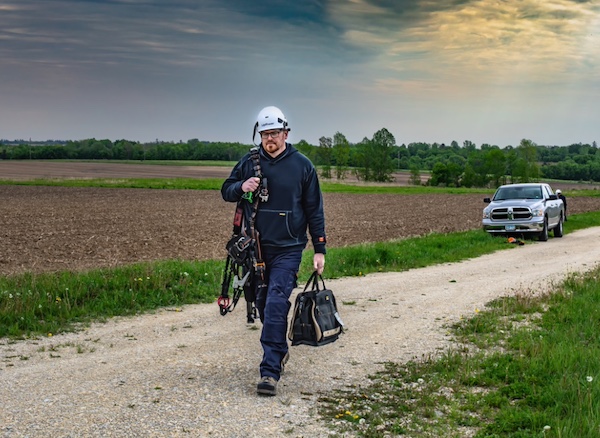
The allure of wind turbines is undeniable. For those fortunate enough to visit these engineering marvels, it’s an experience filled with awe and learning. However, the magnificence of these structures comes with inherent risks, making safety an abs....
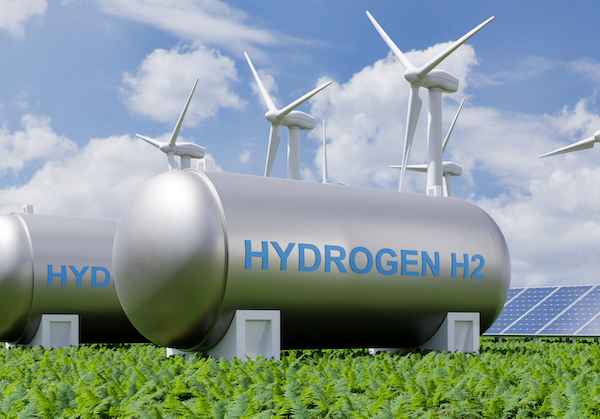
Not enough people know that hydrogen fuel cells are a zero-emission energy technology. Even fewer know water vapor's outsized role in electrochemical processes and reactions. Producing electricity through a clean electrochemical process with water....

In the ever-evolving landscape of sustainable transportation, a ground-breaking shift is here: 2024 ushers in a revolutionary change in Electric Vehicle (EV) tax credits in the United States. Under the Inflation Reduction Act (IRA), a transforma....
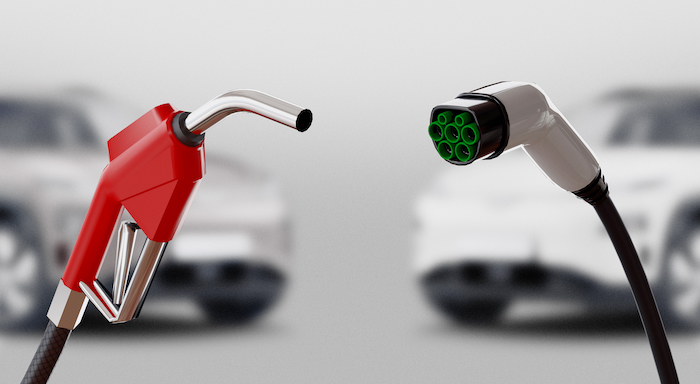
The fact that EV charging is currently cheaper than filling up your traditional gas tank has set a precedent that public EV charging will always remain less expensive. This is certainly a good thing to support the adoption of EVs, but the high infras....

Now more than ever, it would be difficult to overstate the importance of the renewable energy industry. Indeed, it seems that few other industries depend as heavily on constant and rapid innovation. This industry, however, is somewhat unique in its e....

University of Toronto’s latest student residence welcomes the future of living with spaces that are warmed by laptops and shower water. In September 2023, one of North America’s largest residential passive homes, Harmony Commons, located....
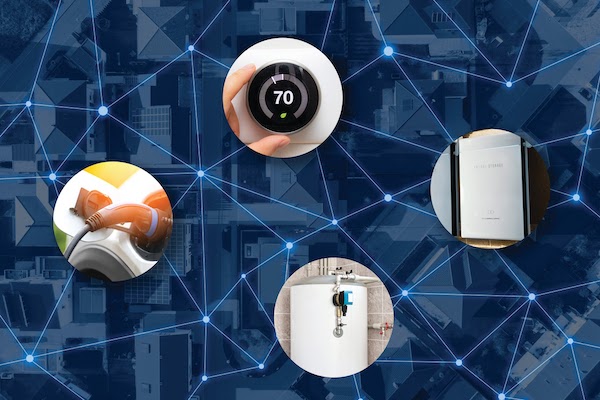
For decades, demand response (DR) has proven a tried-and-true conservation tactic to mitigate energy usage during peak demand hours. Historically, those peak demand hours were relatively predictable, with increases in demand paralleling commuter and ....